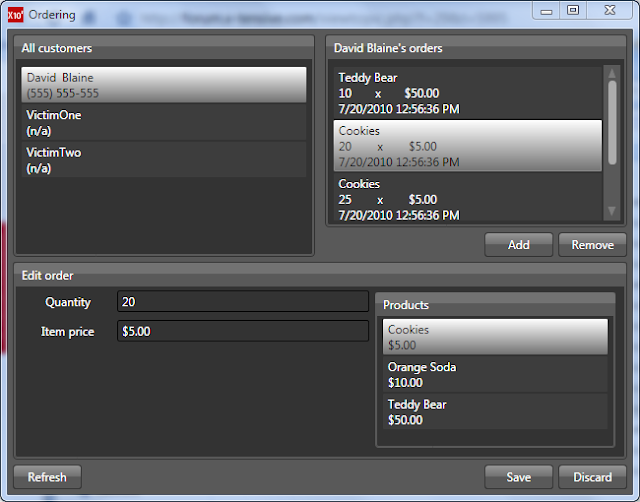I quite frequently get questions like "how can I design my DAL so that it will require nearly zero efforts to replace it?", or "how must I use DataObjects.Net that way?". And it's always quite difficult to make the people believe it's simply a bad idea, that will lead to exaggerated complexity and finally, waste of money.
Worse, our outsourcing department even have a customer, that put this requirement into SRS: "it should be easy to migrate from EF to any other DAL in that project". IMHO (sorry, Denis :) ), the only effect satisfying this requirement is noticeably more complex implementation in pretty simple project. Btw, EF was chosen for this project also mainly because of that requirement: EF is probably the less featured framework from any point except mapping. In the end of all we implemented this requirement, but got nearly 25% delay in delivery. Since I estimate the chance of migration to another ORM as something like 1%, this is nothing but just money waste at our side.
Speaking differently, all these people want to have ORM abstraction layer in their application. For ORM developer like me this sounds a bit ridiculous: ORM itself is designed to be an abstraction layer from the database, so finally these people want to develop an abstraction layer for another abstraction layer.
Why? The most frequent answer is: "I'd like to have an opportunity to switch to another ORM in future.". That's great, but it seems most of such people don't understand that complexity of developing such layer is comparable e.g. to complexity of such libraries as Qt. Do you agree GUI libraries are pretty similar? Initially it looks like true: there are windows, controls, etc., and most of them are nearly identical (scrollbars, buttons, ...). But anyone who knows all the details will say "it's hell, they're quite different!".
Of course, analogy between GUI and ORM tools may look strange: GUI tools are developing during 30+ years, but ORM tools started their way of wide adoption just 5...10 years ago. On the other hand, they're getting more and more complex. Compare what you can do now (LINQ) with ORM tools we have 5-7 years ago. This implies it will be harder and harder to develop ORM abstraction layer in future, because they'll evolve further nearly as GUIs and other well-known APIs.
So why people believe so much in ORM abstraction layer?
I feel this happens mainly because almost any book describing enterprise application design patterns makes a false statement in some form, and moreover, proves by relatively simple, and thus completely unrealistic example. Moreover, people tend to think even statement like "UI, BLL and DAL must be clearly separated" means "you must abstract your DAL from a particular ORM"!
And that's why, before thinking about developing your ORM abstraction layer, I strongly recommend you to:
- Read this post by Ayende: "The false myth of encapsulating data access in the DAL".
- Try to name at least one publicly recognized application having integrated ORM abstraction layer. To be honest, I don't know such applications. If you do, please name them in comments below this post.
So likely, you can't imagine my happiness :) Ayende is a very famous guy, so it's great he wrote about this problem. I really tired feeling myself fighting with this myth alone. Of course, I wasn't, but you know, it's hard to prove something while you don't rely on facts said by widely recognized people. And in this case my feeling was opposite: it was looking like nearly everyone recommends to design your application without binding to a particular ORM.
P.S. I also noticed a very good comment to that article: "Along the same line, you should not embrace a n-tier architecture when you can just build a 2-tier app. 2-tier can be a lot easier if you accept the limitations, and easier = time to market, cost, maintainability = money.". This fits quite well to our experience with our EF-based project I wrote about. It was designed as 3-tier application, although IMHO it was absolutely unnecessary in this case. So again, that's one more decision exaggerating the complexity and cost. So I feel I must be happy we got just 25% delay in this case :)
P.S. I also noticed a very good comment to that article: "Along the same line, you should not embrace a n-tier architecture when you can just build a 2-tier app. 2-tier can be a lot easier if you accept the limitations, and easier = time to market, cost, maintainability = money.". This fits quite well to our experience with our EF-based project I wrote about. It was designed as 3-tier application, although IMHO it was absolutely unnecessary in this case. So again, that's one more decision exaggerating the complexity and cost. So I feel I must be happy we got just 25% delay in this case :)









